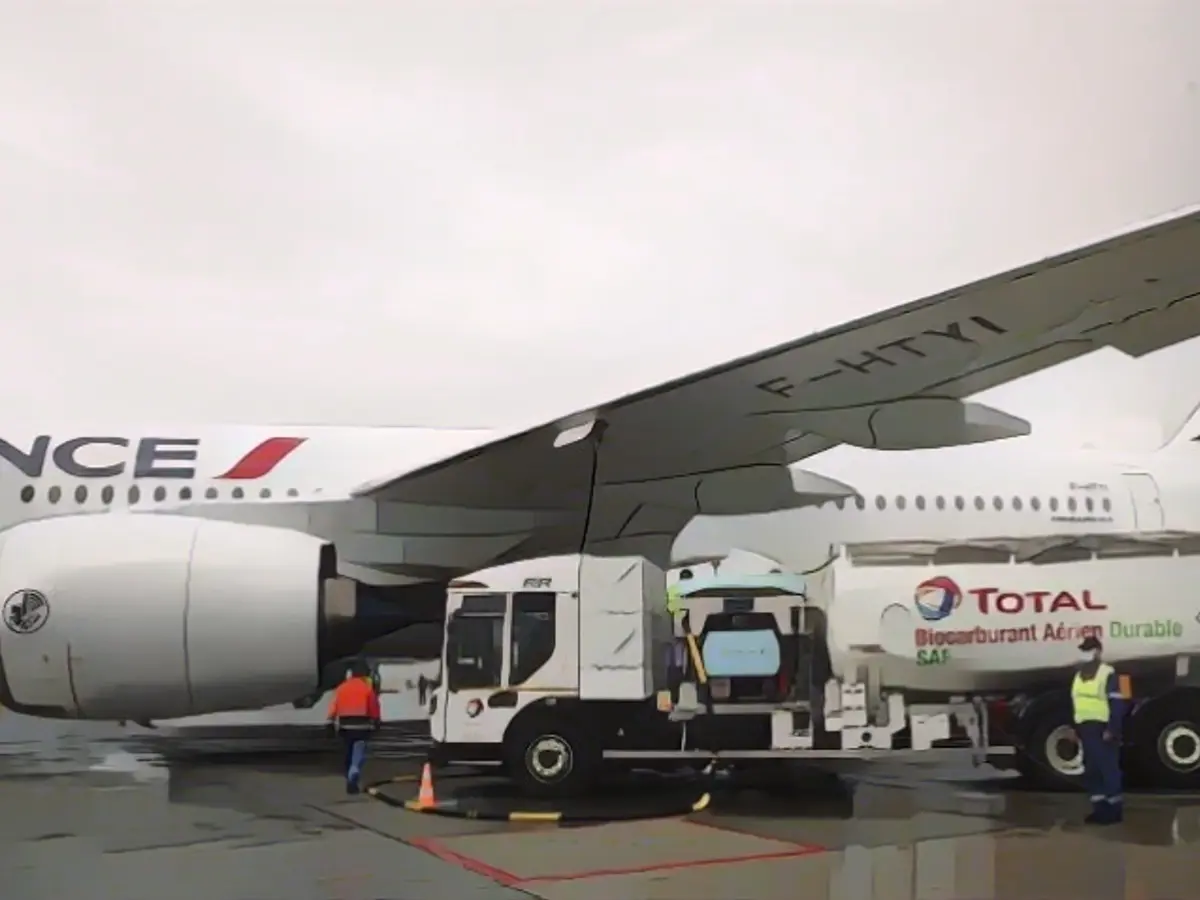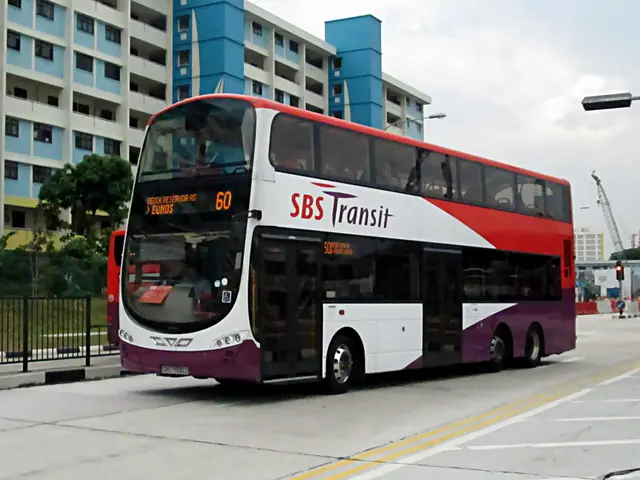The climate isn't waiting on electric planes—sustainable fuels might just be the answer
Daring initiatives to combat aviation's environmental impact are on the rise. With sustainable fuels potentially reducing greenhouse gas emissions by up to 80% compared to traditional jet fuel, exponential growth in SAF production is needed. Currently, SAF production makes up just 0.1% of the commercial aviation industry's jet fuel consumption.
Most SAF is derived from recycled food waste and farm waste (like used cooking oil), and it's classified as a biofuel that significantly reduces carbon emissions. But with electric and hydrogen-powered planes not likely to take off for at least another decade, even for short-haul flights, countries like Singapore regard sustainable fuel as a crucial key to decarbonizing aviation.
However, SAF's green labels come with hefty costs and scarcity. This is why the recent announcement of the 'Clean Skies Tomorrow' coalition, including partners like Airbus, American Airlines, British Airways, Cathay Pacific, Japan Airlines, and Shell, aims high.
With sustainable fuels currently costing two to eight times as much as conventional jet fuel alternatives, the world produced a meager 190,000 tons of SAF in 2019—less than 0.1% of the 300 million tons of jet fuel consumed by commercial airlines. If all announced SAF projects were completed, SAF sales might reach only 1.1% of the predicted global demand for aviation fuel by 2030, according to a report by the World Economic Forum and McKinsey.
Nevertheless, Shell Aviation plans to produce 2 million tons of SAF each year by 2025, ten times the global SAF production of 2019. "We need to do more to decarbonize the aviation industry," Shell Aviation President Anna Mascolo told CNN Business, adding that "sustainability comes at a price."
It's unclear who will foot the bill. Based on Lufthansa's current statistics, less than 1% of passengers choose to offset their CO2 emissions by paying more for their tickets to cover the additional costs of using SAF.
Mascolo suggests that freight carriers, whose revenue streams are more flexible than those of passenger carriers, and companies looking to offset the emissions of business trips will play a pivotal role in SAF investments.
""We must create a market to drive supply,"" said Lauren Uppink Calderwood, Director of Aviation, Travel, and Tourism at the World Economic Forum. ""Without investments in new [SAF] facilities, we won't see sufficient production increase, especially since only three plants at the moment have the capacity to produce large quantities.""
To encourage traffic for these higher-priced SAF options, the alliance, comprising firms like Bank of America, Deloitte, and Boston Consulting Group, has developed a SAF certification system to enable companies to purchase SAF to offset their travel emissions.
""It's not feasible for operators alone to carry the cost,"" Calderwood said. ""If they commit to buying fuel, they cannot sustain their business."" The alliance strives to distribute risks and costs across the entire value chain.
Ongoing experiments show that several airlines worldwide use renewable fuel, primarily in small quantities, mixed with conventional jet fuel.
According to the International Air Transport Association (IATA), sustainable fuel was used on 360,000 commercial flights last decade, with the majority of applications taking place in the past five years. IATA projects that SAF supply contracts will reach a total of $13 billion this year, compared to just $2.5 billion in 2016. The International Air Transport Association estimates that the figure might rise to $30 billion by 2025, still representing less than one-fifth of the conventional jet fuel costs of the global aviation industry in 2019.
Governments worldwide are also taking action to promote the use of SAF, including proposing regulations or mandating its use. Nations such as Norway and Sweden, for example, require that a certain percentage of fuel sold meets the SAF standard.
In the United Kingdom and the EU, SAF permits have been suggested, while the current US administration is considering incentives to encourage SAF production.
""Seventeen countries had sustainable fuel regulations in 2016; now there are 36,"" said Chris Goater, IATA's Head of Communications. ""More governments are recognizing the advantages of introducing SAF in various ways. Ultimately, this should lead to some form of global agreement.""
Related Articles
With SAF playing a critical role in decarbonizing aviation, exponential SAF production growth is essential in making air travel carbon neutral. An alliance comprising various stakeholders in the aviation industry, such as airlines, fuel producers, and governments, will collaborate to establish a robust supply chain, address challenges, and invest in technological advancements.
Source:
Enrichment Data:
Sustainable Aviation Fuels (SAF) can significantly reduce emissions and contribute to decarbonizing the aviation industry in various ways. Notably, SAF can:
- Reduce Lifecycle Emissions: Depending on the production pathway and energy sources used, SAF can reduce carbon emissions by up to 75-90% compared to conventional jet fuel.
- Provide Drop-in Capability: The compatibility of SAF with existing aircraft and infrastructure enables easy integration, facilitating a quicker transition to sustainable fuels.
- Mitigate Non-CO₂ Climate Effects: SAF can reduce the aviation industry's indirect climate effects, such as contrail radiative forcing, thanks to its lower aromatic and sulfur content.
- Offer Scalable Production Pathways: The emerging Power-to-Liquid (PtL) and Methanol-to-Jet production pathways make SAF production scalable, which is crucial for meeting future industry demands.
Despite its environmental benefits, increasing SAF production faces several challenges. Some of these include:
- Scarcity and High Production Costs: Currently, SAF accounts for less than 1% of global jet fuel consumption and is significantly more expensive to produce than conventional jet fuel.
- Feedstock Availability and Land Use Changes: Using feedstocks for SAF production may ultimately lead to land use changes and deforestation, offsetting any environmental gains.
- Logistical and Environmental Concerns: Scaling up SAF production poses logistical challenges, including the establishment of robust supply chains and infrastructure. Environmental concerns must also be addressed.
- Regulatory and Financial Incentives: Industry regulations and financial incentives are required to encourage airlines to adopt SAF. Direct intervention from governments, such as financial subsidies, is needed to bridge the cost gap.
- Technological Advancements: The industry requires continued technological advancements to enhance production capabilities, reduce costs, and improve efficiency. Technological innovations in feedstock utilization and carbon capture technologies are critical for expanding SAF production.
To meet the industry's net-zero carbon emissions target by 2050, substantial investments in SAF production facilities and technological advancements are necessary. Cross-industry collaboration between airlines, fuel producers, and governments is essential for establishing a strong supply chain and addressing the challenges associated with SAF production.








